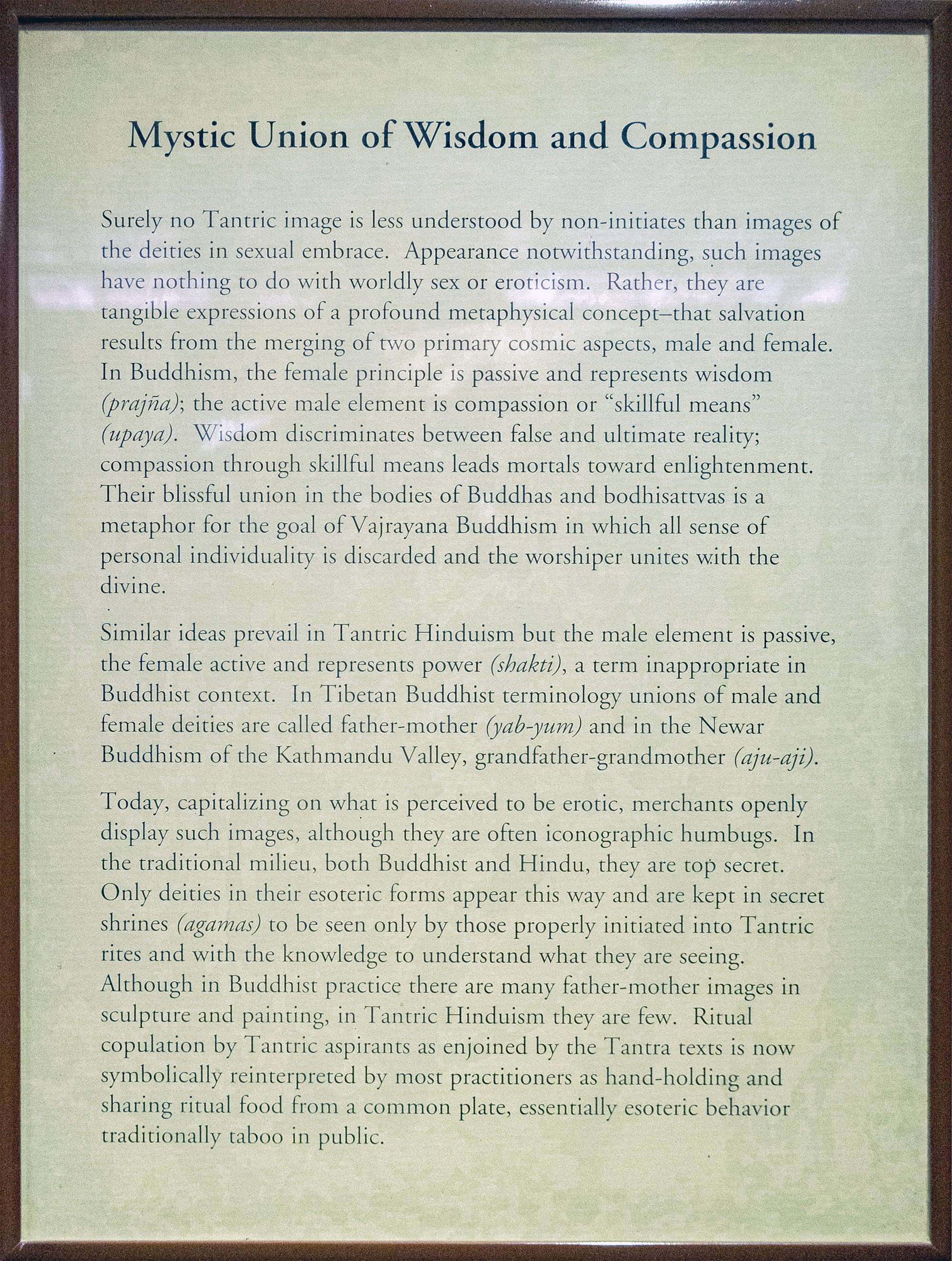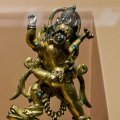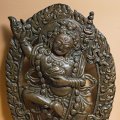Patan Museum (Nepal): photo 73
Photo 73 of 212 in Gallery: Patan Museum (Nepal)

Image title: Mystic Union of Wisdom and Compassion
Description of the photo
Mystic Union of Wisdom and Compassion—Surely no Tantric image is less understood by non-initiates than images of the deities in sexual embrace. Appearance notwithstanding, such images have nothing to do with worldly sex or eroticism. Rather, they are tangible expressions of a profound metaphysical concept—that salvation results from the merging of two primary cosmic aspects, male and female. In Buddhism, the female principle is passive and represents wisdom (prajna); the active male element is compassion or "skillful means" (upaya). Wisdom discriminates between false and ultimate reality; compassion through skillful means leads mortals toward enlightenment. Their blissful union in the bodies of Buddhas and Bodhisattvas is a metaphor for the goal of Vajrayana Buddhism in which all sense of personal individuality is discarded and the worshiper unites with the divine.
Similar ideas prevail in Tantric Hinduism but the male element is passive, the female active and represents power (shakti), a term inappropriate in Buddhist context. In Tibetan Buddhist terminology unions of male and female deities are called father-mother (yab-yum) and in the Newar Buddhism of the Kathmandu Valley, grandfather-grandmother (aju-aji).
Today, capitalizing on what is perceived to be erotic, merchants openly display such images, although they are often iconographic humbugs. In the traditional milieu, both Buddhist and Hindu, they are top secret. Only deities in their esoteric forms appear this way and are kept in secret shrines (agamas) to be seen only by those properly initiated into Tantric rites and with the knowledge to understand what they are seeing. Although in Buddhist practice there are many father-mother images in sculpture and painting, in Tantric Hinduism they are few. Ritual copulation by Tantric aspirants as enjoined by the Tantra texts is now symbolically reinterpreted by most practitioners as hand-holding and sharing ritual food from a common plate, essentially esoteric behavior traditionally taboo in public.
Gallery information:
The Patan Museum is located on the Durbar square of Patan (Lalitpur/Lalitapura, Kathmandu, Nepal) which is associated Keshav Narayan Chowk (Keshavnarayan)—a form of Lord Vishnu. Being listed as a World Heritage Site, the whole of Durbar square is filled with exquisite temples, sculptures and other ancient structures, of which the ancient history history can be traced to the Malla Kings of Lalitpur. It is an important site for both Buddhism and Hinduism.
Photo details:
Date: 2019-12-02
Camera: SONY ILCE-6400
Exposure: 1/160
Aperture: f/3.5
ISO: 2500
Focal length: 18mm
High resolution:
Download file
Size: 3.44 MB
Resolution: 2000 x 2649
© Photograph by Gabe Hiemstra.
License: CC BY-NC-ND 4.0

